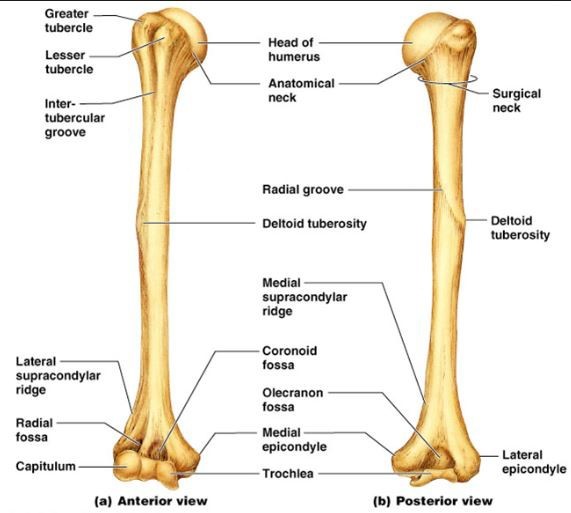On which bone do we find the mastoid process?
Occipital.
Sphenoid.
Frontal.
Temporal.
The Correct Answer is D
The mastoid process is a bony projection of the temporal bone at the posterior base of the skull.
It allows the attachment of muscles such as the sternocleidomastoid and splenius capitis.
It also contains air-filled spaces called the mastoid air cells.
Choice A is incorrect because the occipital bone forms the back and base of the skull and does not have a mastoid process.
Choice B is incorrect because the sphenoid bone is a butterfly-shaped bone at the base of the skull that does not have a mastoid process.
Choice C is incorrect because the frontal bone forms the forehead and the upper part of the eye sockets and does not have a mastoid process.
Nursing Test Bank
Naxlex Comprehensive Predictor Exams
Related Questions
Correct Answer is ["The olecranon fossa"]
Explanation

The olecranon fossa is a depression located on the posterior aspect of the distal end of the humerus bone, just above the trochlea.
It is part of the elbow joint and serves as a resting place for the olecranon process of the ulna bone during elbow extension.
The fossa is bordered by the medial and lateral epicondyles of the humerus and is separated from the trochlea by a thin medial ridge.
The olecranon fossa is an important landmark for orthopedic surgeons as it provides access to the distal humerus for surgical procedures, such as total elbow replacement.
Injury to the olecranon fossa can result in fractures or dislocations of the elbow joint.
Correct Answer is ["Mandible protraction of the temporomandibular joint (TMJ)."]
Explanation
Mandible protraction refers to the movement of the lower jaw (mandible) forwards, away from its rest position.
This movement is also known as jaw thrust.
The joint involved in mandible protraction is the temporomandibular joint (TMJ), which is a synovial joint that connects the mandible to the temporal bone of the skull.
This joint allows for a variety of movements, including:
Mandible retraction: This refers to the movement of the lower jaw backward, towards the skull.
Mandible elevation: This refers to the movement of the lower jaw upwards, towards the upper jaw.
Mandible depression: This refers to the movement of the lower jaw downwards, away from the upper jaw.
Mandible lateral excursion: This refers to the movement of the lower jaw to either the left or the right.
Mandible medial excursion: This refers to the movement of the lower jaw back to its midline position after a lateral excursion.
These movements of the TMJ are essential for functions such as chewing, speaking, and swallowing.
However, excessive or repetitive movements of the jaw can lead to TMJ disorders, which can cause pain, clicking, popping, or locking of the jaw.
Whether you are a student looking to ace your exams or a practicing nurse seeking to enhance your expertise , our nursing education contents will empower you with the confidence and competence to make a difference in the lives of patients and become a respected leader in the healthcare field.
Visit Naxlex, invest in your future and unlock endless possibilities with our unparalleled nursing education contents today
Report Wrong Answer on the Current Question
Do you disagree with the answer? If yes, what is your expected answer? Explain.
Kindly be descriptive with the issue you are facing.
